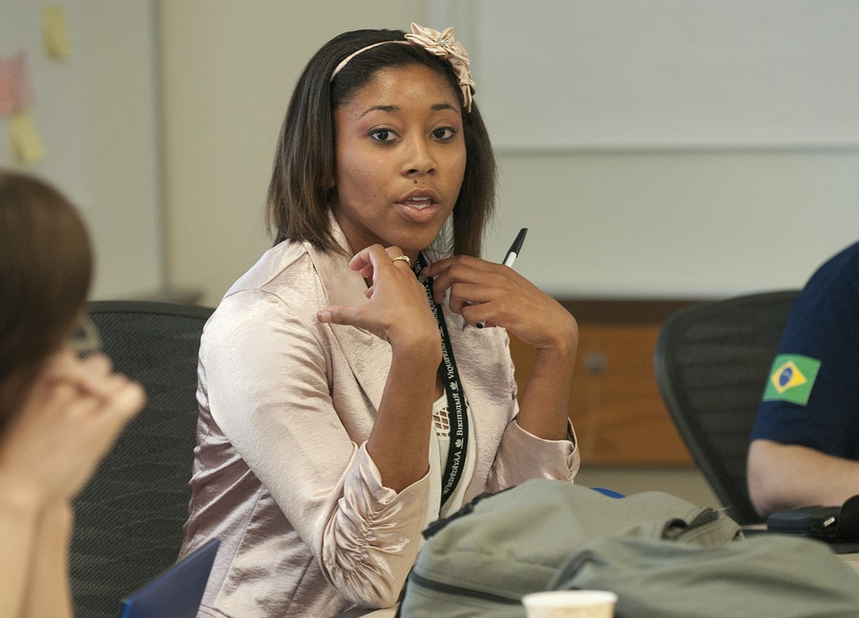This will be a two-part blog post. In this first part, I focus on preparation for holding a difficult conversation about poverty, and in the second, I will clarify how restorative practices might help facilitate a conversation about poverty and what to do to address poverty.
In an earlier post about addressing misconceptions often made associated with restorative practices (RPS), I mentioned that educators may be hesitant to employ RPS because RPS might reveal some real sources of problems that emerge in schools through honest and critical dialogue with students. They may be concerned that conversations that take place in restorative circles might identify poverty and other forms of systematic exclusion and marginalization as sources of problems that students experience at school.
Given that these conversations emerge within the social bounds of schools (as opposed to in the broader community, where poverty is largely reproduced), some educators are concerned that addressing these problems will reproduce neoliberal tendencies in which addressing problems are relegated to the individual, or an individual school, and away from broader sociopolitical structures.
In turn, I suggested that RPS are critical for talking through and coordinating more comprehensive approaches (e.g. community organizing, legal advocacy, leadership development, action research, and other approaches) to address such sources of problems. However, I did not discuss how RPS might be relevant to a meaningful conversation about poverty and considering subsequent action. Thus I will consider:
1. Preparation
- What I know about poverty
- Nonviolent communication
- Setting the stage
2. Holding the restorative practice circle
- How to encourage learning and discussion while not imposing a particular viewpoint
- Taking realistic action

To begin, I might first prepare how I understand poverty. I know that many definitions exist—some of which are material-based in which the “poor” are those who lack access to basic economic, food, health, other resources, or education (Sachs, 2015; Easterly, 2006). Other definitions suggest that a person might be poor in spirit and relationships (Rist, 2008), or that the idea of “poor” is something socially constructed to elide the socio-economic relations between the “wealthy” and the “poor” (Rist, 2008). To clarify, “poverty” maintains focus on those labeled as “poor” as opposed to focusing on people and systems who produce gross inequality. The “fixing poverty” debate reinforces ideas complicit with western neoliberal culture—free enterprise, survival of the fittest, and efficiency—to people who wouldn’t be able to profit from these ideas in their local communities or don’t want them because they don’t lead to lives that are not vibrant enough to warrant spreading (Illich, 1968).
Related “solutions” also range in scope. They range from “aid” solutions that are designed to address deficits in materials needed for healthy living. Any failures of these approaches are due to ineffective aid implementation and distribution with unclear goals, insufficient evaluation metrics, lack of accountability, ineffective feedback mechanisms, and unsustainable finance (Sachs, 2014). They suggest that these failures do not match the complexity of “poverty” and thus to improve, they need to control economic growth, social services, environmental sustainability, gender issues, public administration, decentralization, social capital, mobilization of poor, debt management, aid, good governance, etc.
Other scholars suggest that this rationale is simply an excuse to control more of people’s lives such that they are even more trapped within a global “free” capital market (Rist, 2008). Still, others suggest that democratic and piecemeal approaches that make use of external expertise are more likely to develop sustainable resources, leadership, and gradual reform (Easterly, 2006). Yet, some others suggest that these approaches are too ineffective because they are too indirect; they seek to solve poverty by first solving something else (King, 1967). Instead, governments must directly provide reasonable incomes through work for those inevitably marginalized by systems of competition and scarcity—a recognition of poverty as something that is systemically produced (King, 1967).
Given disparate approaches, I recognize that poverty is a complex issue with multiple, disputed perspectives—all with their own utilities, assumptions, and purposes.
To also prepare for this conversation, I would make sure that everyone involved would be well-practiced in nonviolent communication—a set of skills that we’ve been working on and using throughout the school year.
And finally, to prepare, I would set the stage for holding the restorative practice circle. Ideally, students would have had ample practice engaging in such a circle throughout the school year for a variety of purposes listed here. Also, to learn more about circles in school please visit this resource.
In the next part of this blog post, I will clarify how restorative practices might help facilitate a conversation about poverty and what to do to address poverty.
References
Easterly, W. (2006). The white man’s burden: why the West’s efforts to aid the rest have done so much ill and so little good. Penguin Books.
Illich, I. (1968). To hell with good intentions. In An Address to the Conference on InterAmerican Student Projects (CIASP) in Cuernavaca, Mexico, on April (Vol. 20).
King Jr, M. L. (1967). Where do we go from here: Chaos or community? (Vol. 2). Beacon Press.
Rist, G. (2008). The history of development: from western origins to global faith. Zed books.
Sachs, J. (2014). The case for aid. Foreign Policy.
Sachs, J. (2015). The end of poverty: Economic possibilities for our time. Penguin Books.









While I’m not an educator, your post gives me much food for thought. I keep thinking about the restorative circles and how useful they might be outside the classroom. Any ideas on that? Thanks!
YES! There are so many applications of restorative circles or parts of restorative practices that are applicable to community and family settings. A list would be immense! Fundamentally, several features of these circles and practices are important to everyday living: a focus on providing tools to make sense of and communicate our emotional lives; structures to bring us together over and over again as we struggle through making sense of our experiences; a commitment to healing, responsibility, and restoration; and there are so many other core commitments… but these practices are useful everywhere.
Perhaps I’ll make one note for businesses. Several studies (focused primarily on Law firms, accounting offices, and consulting firms) have explored the impact of three general approaches to racial diversity: 1.) Ignore any differences; 2.) Embrace differences with structural policies like affirmative action; 3.) Cherish, highlight, and actively champion views from different racial/ethnic experiences. The third approach led to massive improvements across multiple metrics provided there was space to actively integrate these ideas with respect. Some of these practices would be foundational for these success for obvious reasons.
Did you have some spaces outside of classrooms that you had in mind?